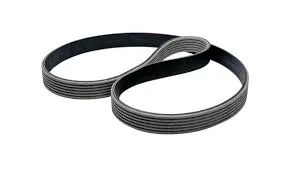- Arabic
- French
- Russian
- Spanish
- Portuguese
- Turkish
- Armenian
- English
- Albanian
- Amharic
- Azerbaijani
- Basque
- Belarusian
- Bengali
- Bosnian
- Bulgarian
- Catalan
- Cebuano
- Corsican
- Croatian
- Czech
- Danish
- Dutch
- Afrikaans
- Esperanto
- Estonian
- Finnish
- Frisian
- Galician
- Georgian
- German
- Greek
- Gujarati
- Haitian Creole
- hausa
- hawaiian
- Hebrew
- Hindi
- Miao
- Hungarian
- Icelandic
- igbo
- Indonesian
- irish
- Italian
- Japanese
- Javanese
- Kannada
- kazakh
- Khmer
- Rwandese
- Korean
- Kurdish
- Kyrgyz
- Lao
- Latin
- Latvian
- Lithuanian
- Luxembourgish
- Macedonian
- Malgashi
- Malay
- Malayalam
- Maltese
- Maori
- Marathi
- Mongolian
- Myanmar
- Nepali
- Norwegian
- Norwegian
- Occitan
- Pashto
- Persian
- Polish
- Punjabi
- Romanian
- Samoan
- Scottish Gaelic
- Serbian
- Sesotho
- Shona
- Sindhi
- Sinhala
- Slovak
- Slovenian
- Somali
- Sundanese
- Swahili
- Swedish
- Tagalog
- Tajik
- Tamil
- Tatar
- Telugu
- Thai
- Turkmen
- Ukrainian
- Urdu
- Uighur
- Uzbek
- Vietnamese
- Welsh
- Bantu
- Yiddish
- Yoruba
- Zulu
Jul . 30, 2024 23:26 Back to list
Understanding the Importance of Emergency Serpentine Belts for Vehicle Reliability and Performance
Understanding the Importance of Emergency Serpentine Belts
The serpentine belt, a crucial component in modern vehicles, plays a vital role in powering various engine accessories such as the alternator, power steering pump, air conditioning compressor, and water pump. Though these belts are designed to be durable and operate efficiently, unexpected failures can occur, often at the most inconvenient times. This is where the concept of an emergency serpentine belt becomes essential for both vehicle drivers and automotive professionals.
The Role of the Serpentine Belt
The serpentine belt is typically a long, winding belt that loops around multiple pulleys in the engine compartment. Unlike older vehicles that may have several separate belts, most modern cars utilize a single serpentine belt that synchronously drives all necessary accessories. This design not only simplifies the engine layout but also reduces the number of components that can fail, ultimately lowering maintenance costs.
However, despite their robust design, serpentine belts can deteriorate over time due to factors such as wear and tear, heat exposure, engine vibrations, and contamination from oil or coolant leaks. A worn or frayed serpentine belt can lead to a host of problems, including a loss of power steering, battery charging issues, and overheating of the engine. As such, it becomes crucial for drivers to be aware of the potential signs that their serpentine belt might be nearing failure.
Signs of Serpentine Belt Failure
Awareness of the symptoms indicating the need for belt replacement can help prevent emergencies. Common signs include a squealing noise coming from the engine compartment, visible cracks or fraying on the belt, and difficulty in steering, particularly while turning. If any of these issues arise, it's imperative to inspect the belt promptly to avoid getting stranded or damaging other engine components.
emergency serpentine belt

Emergency Preparedness
In light of the potential for serpentine belt failure, travelers should consider keeping a spare serpentine belt in their vehicle, particularly those taking long trips or driving in remote areas. An emergency serpentine belt kit can be a lifesaver, especially if paired with basic tools and knowledge of how to replace a belt. This kit should include
1. A spare serpentine belt fitted for your vehicle’s make and model. 2. A wrench or socket set for loosening the tensioner. 3. A belt diagram or a guide for reference, which can often be found in the vehicle's manual or online.
DIY Replacement
If a serpentine belt does snap while driving, the best course of action is to pull over to a safe location. Knowing how to replace the belt can save time and money. The process typically involves relieving tension on the belt via the tensioner pulley, removing the old belt, routing the new belt according to the diagram, and then reapplying tension. While it’s advisable to have a professional mechanic handle complex repairs, a minor belt replacement can often be a straightforward task for those with basic mechanical skills.
Conclusion
In conclusion, the serpentine belt is an essential yet often overlooked element of vehicle maintenance. Understanding its function, recognizing the signs of failure, and being prepared with an emergency belt kit can save drivers from unexpected breakdowns. Regular inspections and timely replacements not only prolong the life of the serpentine belt but also enhance overall vehicle reliability, ensuring safer and smoother travels on the road. Being proactive in maintenance can turn a potential emergency into a mere inconvenience.
-
Upgrade Power Steering Pump Belt for Smooth, Quiet Operation
NewsAug.27,2025
-
Precision Timing Belt & Chain: Engine Performance & Durability
NewsAug.26,2025
-
Precision Lathe Drive Belts: Durable & Reliable Performance
NewsAug.25,2025
-
84.5 Serpentine Belt: Durable & Precision Fit for Your Engine
NewsAug.24,2025
-
Premium Ribbed Drive Belts for Quiet Power Transmission
NewsAug.23,2025
-
High-Performance Vehicle Timing Belt for Engine Precision
NewsAug.22,2025

